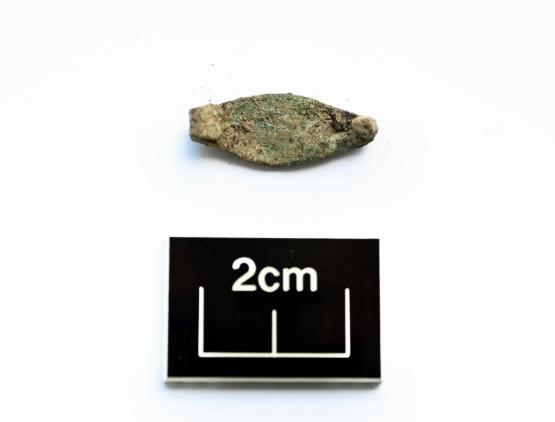Rare Iron Age comb and belt buckle discovered

Rare Iron-Age artefacts have been discovered by University of Bradford archaeologists on the island of Rousay, Orkney suggesting long term crafting and industry at the site, as well as the re-using of Roman metals.
A brass belt buckle, made with an alloy containing zinc from Roman times, was unearthed during the annual preservation work at Swandro - a site which is under serious threat of erosion and the loss of important insights into life on the island during Bronze Age, Iron Age and Viking settlement. The buckle is the first of its kind found on Orkney, with only a few other examples across Scotland.
The site also uncovered a unique whalebone comb thought to be close to 2,000 years old, fashioned into the shape of a fish and suggestive of a bone-working area, giving a glimpse of the day-to-day lives of early inhabitants of the island.

Dr Steve Dockrill, co-director of the excavation with Dr Julie Bond of the University of Bradford said: “This year’s work has been significant in understanding the life history of this important building and its relationship with the settlement around it.
"The site is rich in cultural material and evidence for the use of land and sea in terms of agriculture and fishing. This site is being destroyed by the sea.
"Over a third of the roundhouse has been lost to coastal erosion. Despite this we are uncovering new evidence for life in the Iron Age and are using the latest technology to record the archaeological evidence before it vanishes."

The team from the University of Bradford - who recently won Current Archaeology magazine’s Rescue Project of the Year - travel to Orkney every year with Archaeology students, giving them vital practical experience.
The University of Bradford-led excavation is working in partnership with the Swandro Orkney Coastal Archaeology Trust, which relies on public donations to continue its work, and with Historic Environment Scotland which also supports the research. You can follow the progress of the excavation at swandro.co.uk
There are places available to study Archaeology at the University of Bradford through Clearing.
